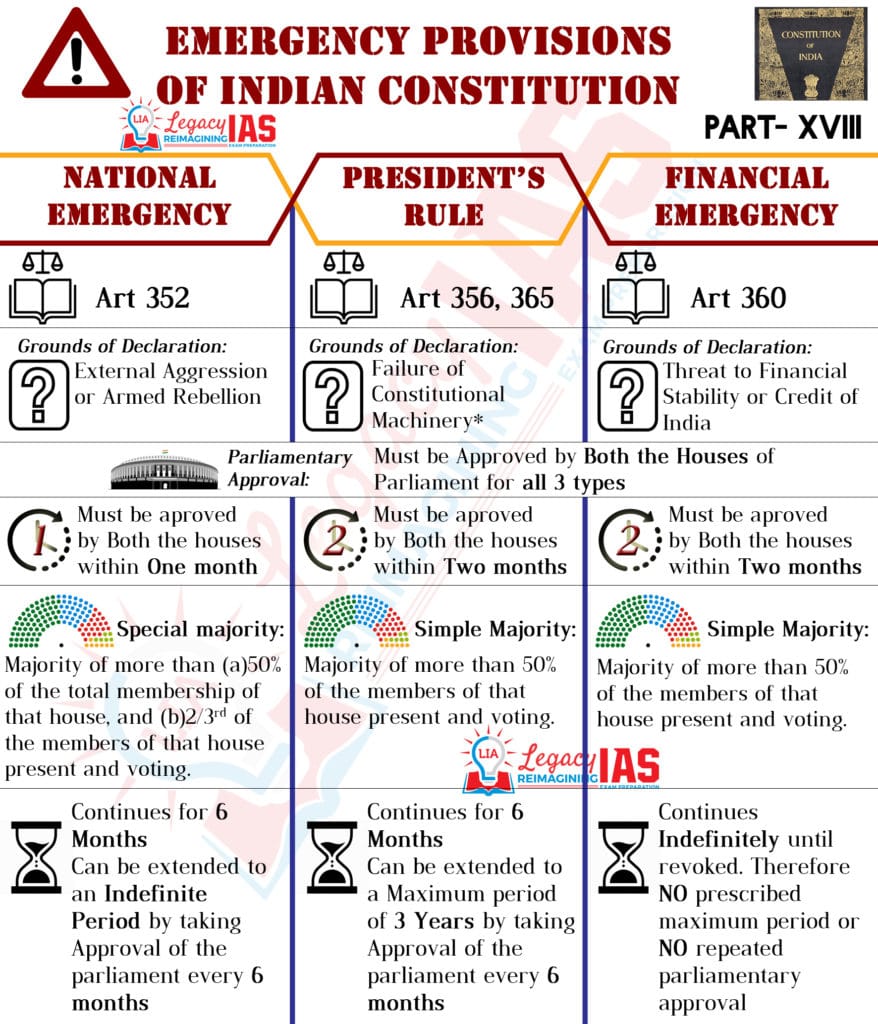Emergency Provisions in Indian Constitution are contained in PART XVIII- Articles 352 to 360.

Infographic on Emergency Provisions: The Indian Constitution gives the authority to declare three types of Emergencies to the President: National Emergency, State Emergency and Financial Emergency. Learn about these emergencies with the help of this Infographic.
National Emergencies Invoked in the Past
In India, a national emergency has been invoked three times so far.
The first time, on October 26, 1962, in the wake of a clash with China. It remained in force during the Indo-Pak conflict in 1965 and was revoked only in January 1968.
The second time, in December 1971, as a result of the India and Pakistan dispute on the ground of external aggression.
While 1971 was still effective, another proclamation was issued on June 26, 1975. This time the proclamation was issued on the ground of “internal disturbance” threatening the security of India. Bothe these proclamations were revoked in March 1977.
When the State Emergency / President’s Rule can be Invoked
- No party in the Assembly has a majority in the State Legislative Assembly to be able to form the government.
- A government in office loses its majority due to defections and no alternative government can be formed.
- A government may have majority support in the House, but it may function in a manner subversive of the Constitution. As for example, it may promote fissiparous tendencies in the State.
- The State Government does not comply with the directions issued by the Centre Government under various Constitutional provisions.
- Security of the State may be threatened by a widespread breakdown of law and order in the State.
- It may be debatable whether Art. 356(1) can be invoked when there are serious allegations of corruption against the Chief Minister and the Ministers in a State.



